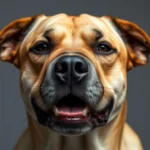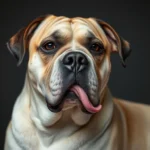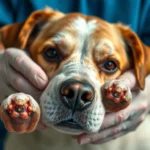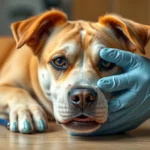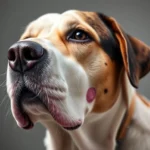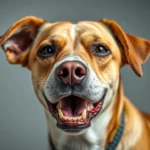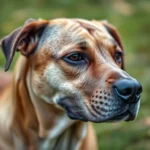
Canine parvovirus (commonly referred to as parvo) is a serious viral infection that predominantly affects dogs. Understanding how this virus operates and whether dogs can contract it more than once is crucial for every dog owner. This blog post will delve into the nature of parvovirus, the possibility of re-infection, prevention strategies, treatment options, and frequently asked questions.
Understanding Canine Parvovirus
What is Parvovirus?
Parvovirus is a highly contagious virus that primarily affects dogs, particularly puppies and unvaccinated adult dogs. The virus is characterized by its ability to replicate rapidly within the host, targeting rapidly dividing cells, particularly those in the gastrointestinal tract and bone marrow. This can lead to severe gastrointestinal issues, making it critical for dog owners to understand the implications of a parvo infection.
Symptoms of Parvovirus Infection
Recognizing the symptoms of parvovirus is essential for early intervention. Common signs include:
- Severe vomiting
- Profuse diarrhea, often bloody
- Lethargy
- Loss of appetite
- Fever
Symptoms can vary based on the dog’s age and overall health. Puppies are particularly vulnerable due to their underdeveloped immune systems, often exhibiting more severe symptoms than adult dogs.
Transmission of Parvovirus
Parvovirus spreads primarily through direct contact with infected dogs or contaminated environments, such as kennels, parks, or even the feces of an infected dog. The virus can survive in the environment for several months, making it particularly challenging to eliminate. Understanding how transmission occurs can help dog owners implement better prevention strategies.
Can Dogs Catch Parvo Twice?
Overview of Re-infection Risks
One of the most pressing questions concerning canine parvovirus is whether dogs can catch parvo twice. The answer is yes; it is possible for dogs to contract parvo more than once, although it is relatively rare. Factors influencing re-infection include the dog’s age, vaccination status, and immune response to the initial infection.
Immune Response to Parvovirus
When a dog is infected with parvovirus, its immune system mounts a response, creating antibodies to fight off the virus. This immune response generally provides some level of protection against future infections. However, immunity may not be lifelong, and some dogs may have a weakened immune response due to factors like stress, illness, or age, making them susceptible to re-infection.
Case Studies and Vet Insights
Veterinary professionals have documented various cases where dogs have contracted parvovirus multiple times. For instance, a case study reported a young dog that had recovered from parvo but was later re-infected due to inadequate vaccination and exposure to contaminated environments. Vets stress the importance of booster vaccinations and monitoring for re-infection signs, especially in high-risk environments.
Prevention Strategies
Vaccination Protocols
Vaccination is the most effective way to prevent parvo. Puppies should receive their first vaccine at around 6 to 8 weeks of age, with follow-up doses every 3 to 4 weeks until they are about 16 weeks old. Adult dogs also require regular booster shots to maintain immunity.
Hygiene and Environment Management
Maintaining a clean environment is crucial in preventing the spread of parvovirus. Here are some best practices:
- Regularly clean and disinfect areas where your dog spends time.
- Avoid contact with unknown dogs, especially in public places.
- Wash hands and shoes after visiting areas with other dogs.
These practices can significantly reduce the risk of exposure to parvo.
Monitoring and Early Detection
Being vigilant about your dog’s health can aid in early detection of parvo infection. Regular vet check-ups and monitoring for symptoms such as lethargy, vomiting, and diarrhea can help catch the virus early.
Treatment Options for Parvovirus
Immediate Actions if Parvo is Suspected
If you suspect your dog has parvovirus, it is crucial to act quickly. Here’s what to do:
- Isolate the Dog: Keep your dog away from other pets to prevent spreading the virus.
- Contact Your Veterinarian: Schedule an appointment immediately. Inform them of your concerns and symptoms.
- Avoid Home Remedies: Do not attempt to treat your dog at home without veterinary guidance.
Veterinary Treatment Procedures
Once at the vet, treatment for parvovirus typically involves hospitalization. The primary goal is to provide supportive care, which includes:
- Intravenous Fluids: To combat dehydration caused by vomiting and diarrhea.
- Medications: To manage symptoms, such as anti-nausea drugs and antibiotics to prevent secondary infections.
- Nutritional Support: Once stable, your vet may introduce a bland diet to help your dog recover.
Recovery Process and Aftercare
Recovery from parvovirus can take several days to weeks, depending on the severity of the infection. During this time, it’s essential to follow your vet’s aftercare instructions, which may include:
- Continuing medications as prescribed.
- Providing a quiet, comfortable space for your dog to rest.
- Gradually reintroducing food once your dog is stable.
Monitoring your dog closely during recovery is vital, as some dogs may experience lasting effects from the virus.
Frequently Asked Questions
Can puppies catch parvo even after vaccination?
Yes, puppies can still contract parvo even after receiving vaccinations. This is often due to the timing of the vaccinations or the presence of maternal antibodies that may interfere with vaccine efficacy. Therefore, it’s crucial to adhere to the recommended vaccination schedule.
What breeds are most susceptible to parvo?
Certain breeds are more susceptible to parvovirus, including Rottweilers, Doberman Pinschers, American Pit Bull Terriers, and German Shepherds. This increased susceptibility may be due to genetic factors that affect immune response.
Can other animals catch parvo?
Parvovirus is specific to dogs and does not infect other animal species. However, similar viruses exist in other animals, but they are distinct and do not pose a risk to dogs.
Conclusion
Understanding the complexities of canine parvovirus, including the possibility of re-infection, is crucial for dog owners. The key points to remember are the importance of vaccinations, maintaining a clean environment, and monitoring your dog for any signs of illness. Responsible pet ownership and proactive healthcare can make a significant difference in your dog’s well-being.
By staying informed and consulting with your veterinarian, you can ensure that your furry friend remains healthy and safe from the dangers of parvovirus.
